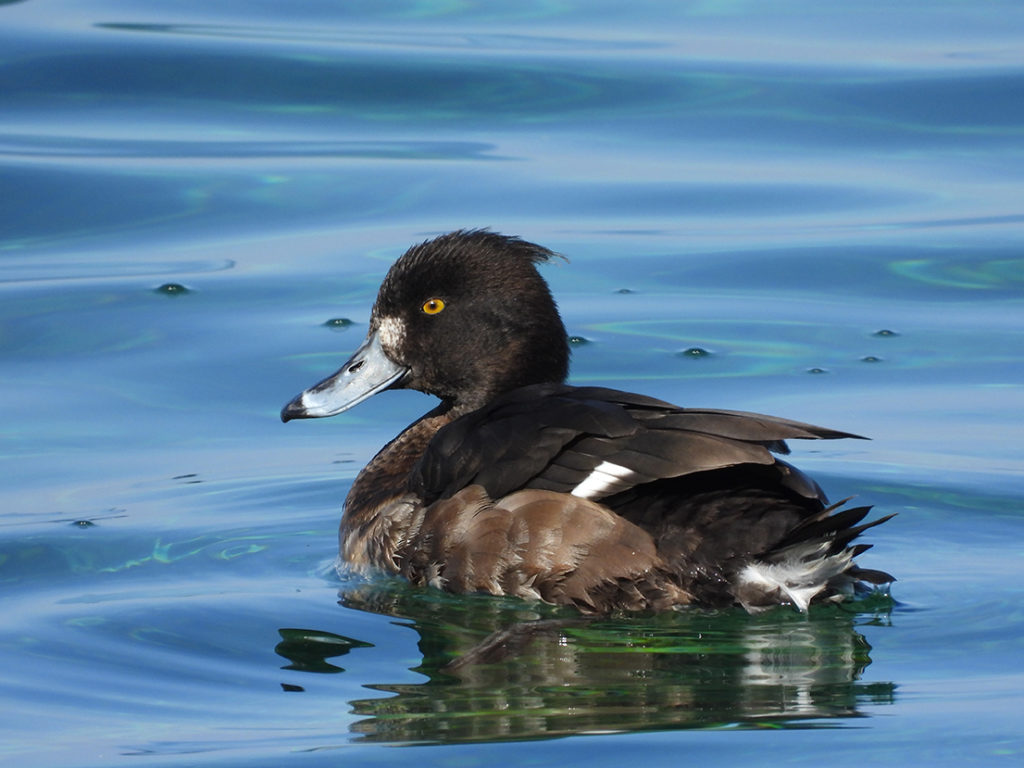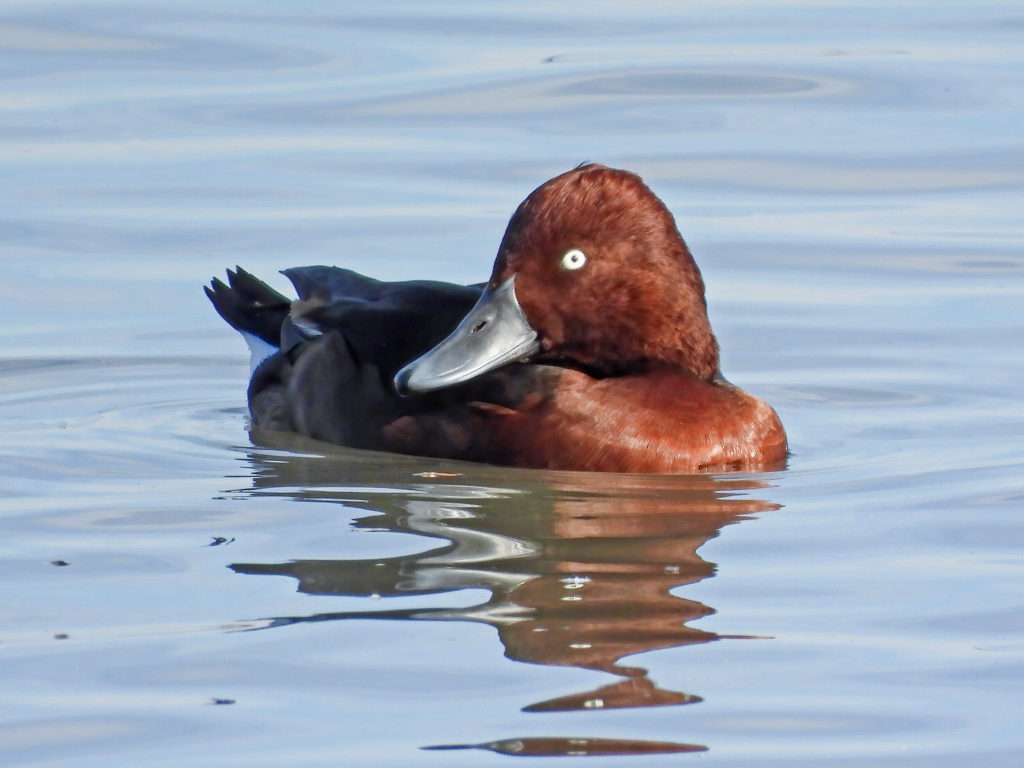Cherry Picking in flocks of ducks: Why a good spotting scope is essential for a reliable identification.
The Ferruginous Duck (Aythya nyroca), a member of the group of diving ducks, was and still is a rarity in Western Europe. Ferruginous Ducks can sometimes appear in larger groups with double-digit numbers of specimens outside the breeding season, particularly on Lake Constance. They are usually spotted individually or in small groups in or at the edge of large flocks of wintering Pochards and Tufted Ducks, however, differentiating them from female and juvenile Tufted Ducks is not easy. This is because the features highlighted in many identification books occasionally turn out to be pitfalls in practice, especially for less experienced ornithologists.
In order to carefully scan through a flock of hundreds or even thousands of ducks resting on the water, you not only need perseverance, but also a spotting scope with outstanding optics and a high dynamic range that allows you to continuously switch between the largest possible field of view and an extremely high level of magnification with a comfortable view in order to first find potential “suspects” and then briefly inspect them in detail. In the all-important discipline of dynamics, the ZEISS Harpia is by far the world champion with a maximum field of view of 59 m/1000m at minimum magnification and a maximum magnification of 70x that can be achieved within seconds. The key to success in this case is that it’s easy to switch between maximum field of view and maximum magnification in just two seconds without having to make time-consuming and risky equipment adjustments during rugged field use – because ultimately, this is the only way to conduct professional-quality waterfowl counts within a limited time frame. After all, the term maximum field of view at low magnification also refers to depth of field, which plays an extremely important role in ornithology. This depth of field is inextricably linked to magnification and ensures that the animals in the foreground are focused and identifiable as those in the background (Fig. 1). This is because even at medium magnification, the birds in the foreground and background become increasingly blurred due to purely physical reasons (Fig. 2).
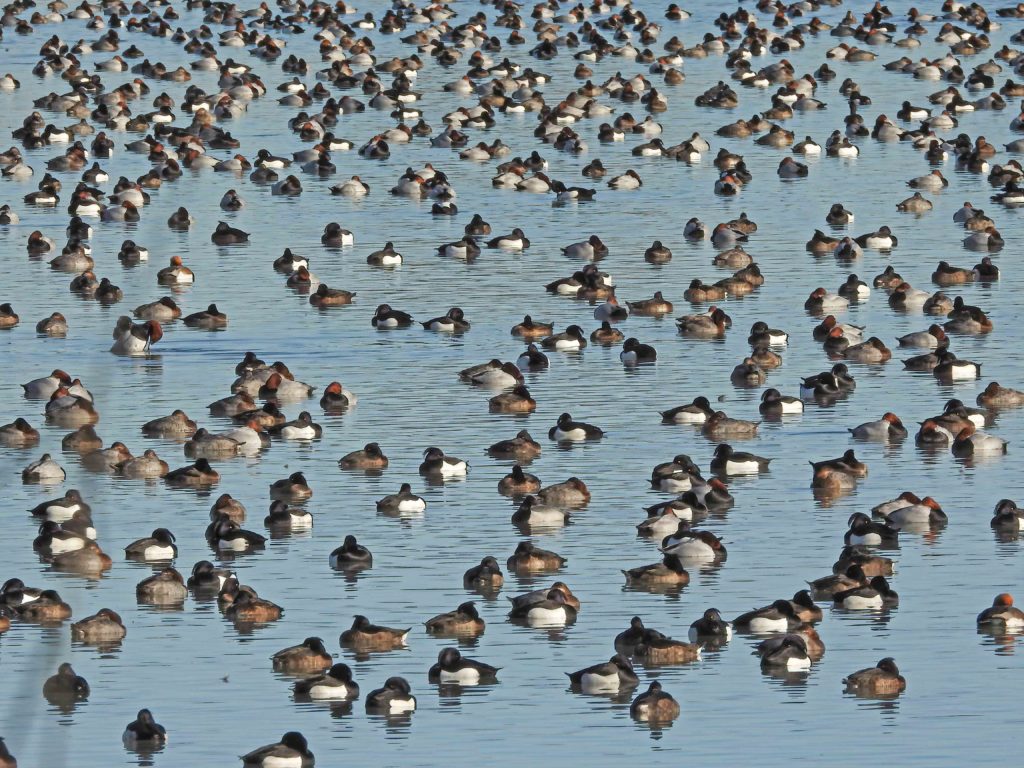
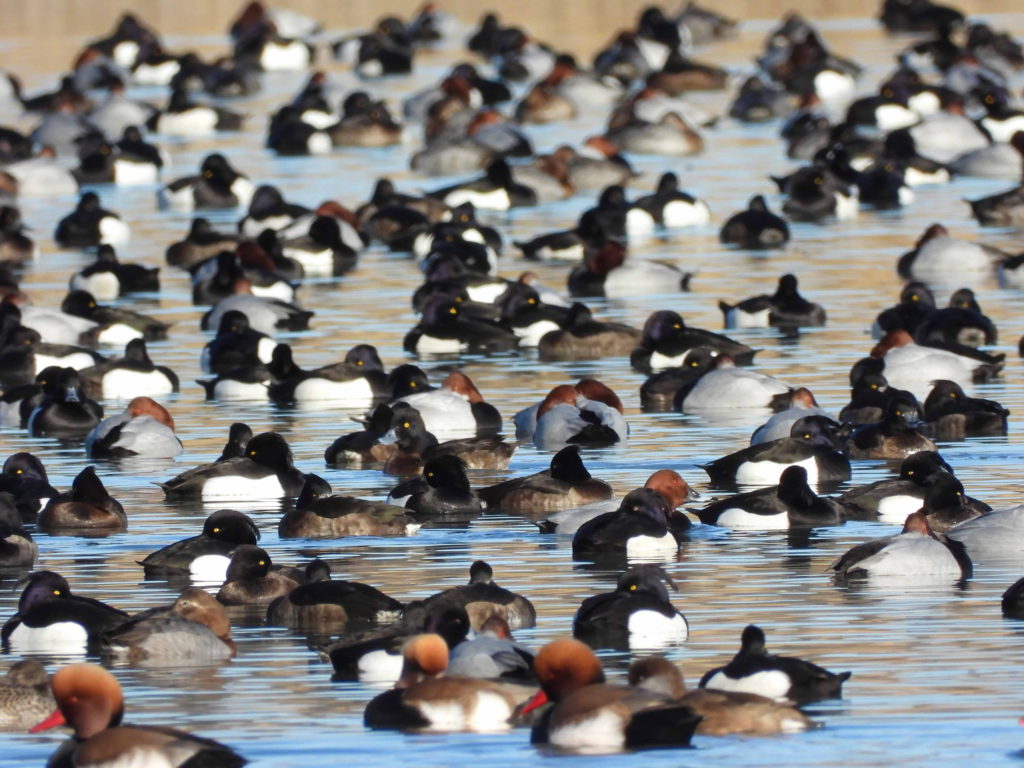
In the case of diving ducks, we encounter three basic problems: The first is diving ducks’ peculiar tendency to remain underwater while foraging, not necessarily resurfacing at the point where they first dove. Second, when they do surface for a short time to catch their breath and ensure that the coast is clear, they are usually very low in the water, which means that distinguishing features of Ferruginous Ducks, such as their white undertail coverts, are either not visible at all or are only partially visible. Third, resting ducks may be positioned high on the water, but often keep their bill and forehead hidden under their plumage while asleep (Fig. 3). As a result, important features are not visible, such as the white feathers at the base of the bill that are often present in Tufted Ducks.
At any rate, we are constantly forced to more closely examine all the birds that appear to be potential suspects and to “bring them closer” for this purpose with the aid of magnification (Fig. 4). Needless to say, there’s no time for the cumbersome process of mounting extension rings, and often not even enough time to change eyepieces.
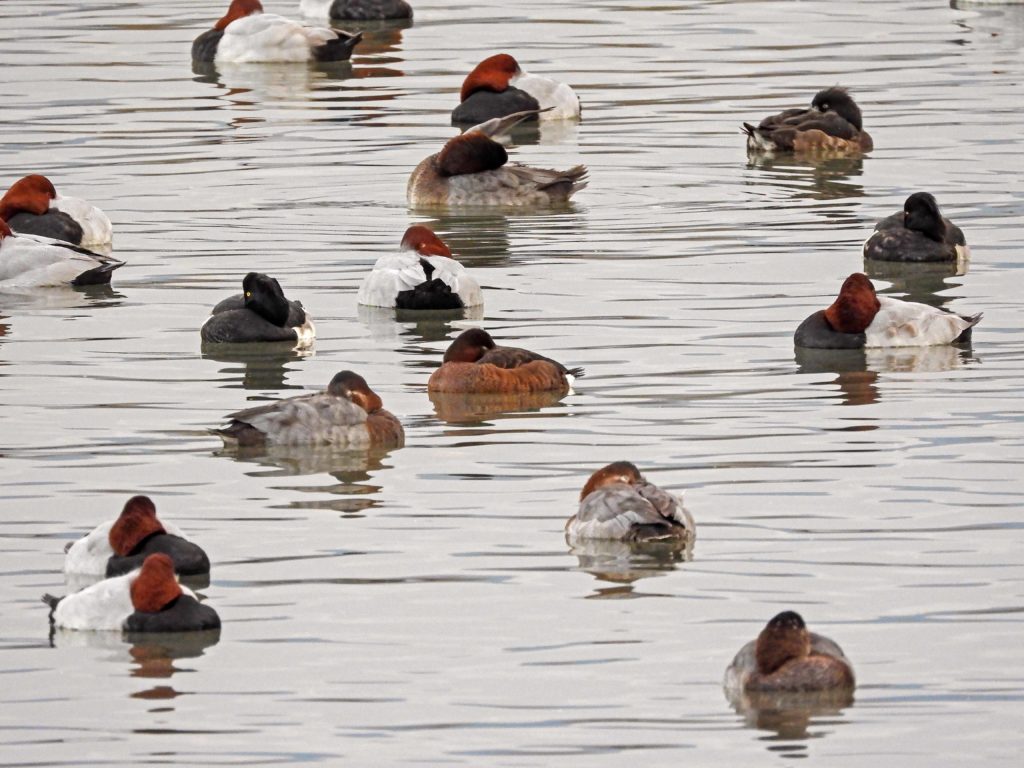
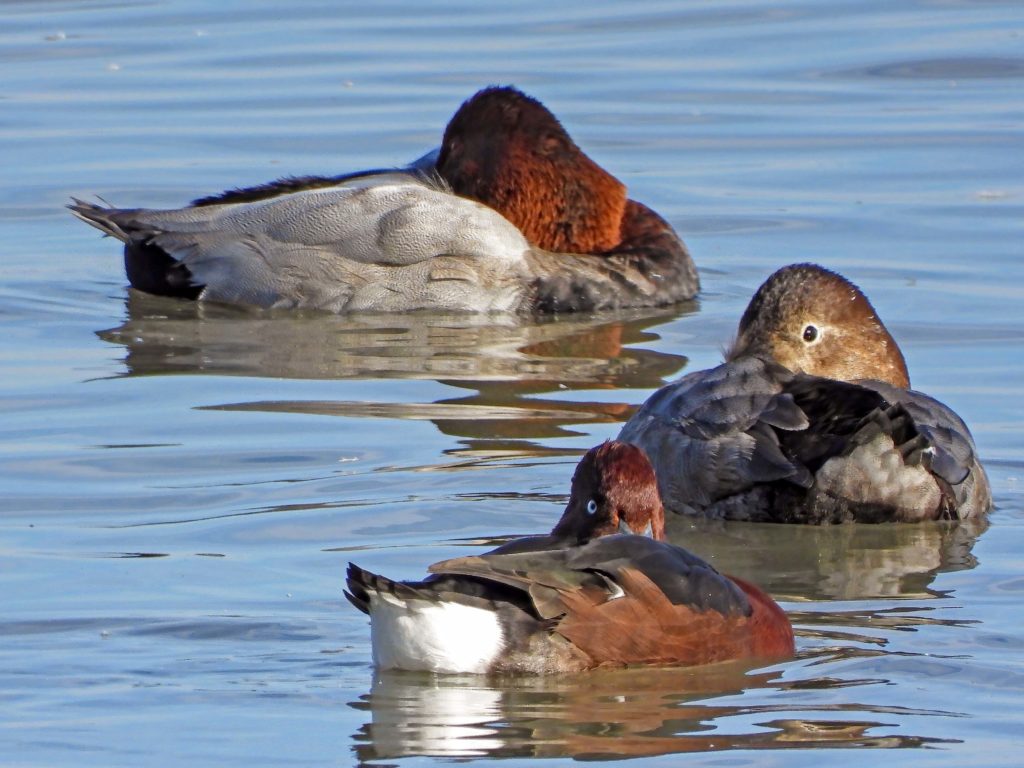
In resting, sleeping flocks of ducks, the often mentioned white undertail coverts of the Ferruginous Duck are indeed of significance when it comes to identifying potential specimens, but they cannot be used as the sole criterion. This is because female Tufted Ducks also sometimes show white-colored undertail coverts, which hardly differ from those of the Ferruginous Duck. Fig. 5 depicts such a specimen, and a crest, although usually present in female Tufted Ducks and at least partially formed, is not visible from every perspective when viewing sleeping birds.
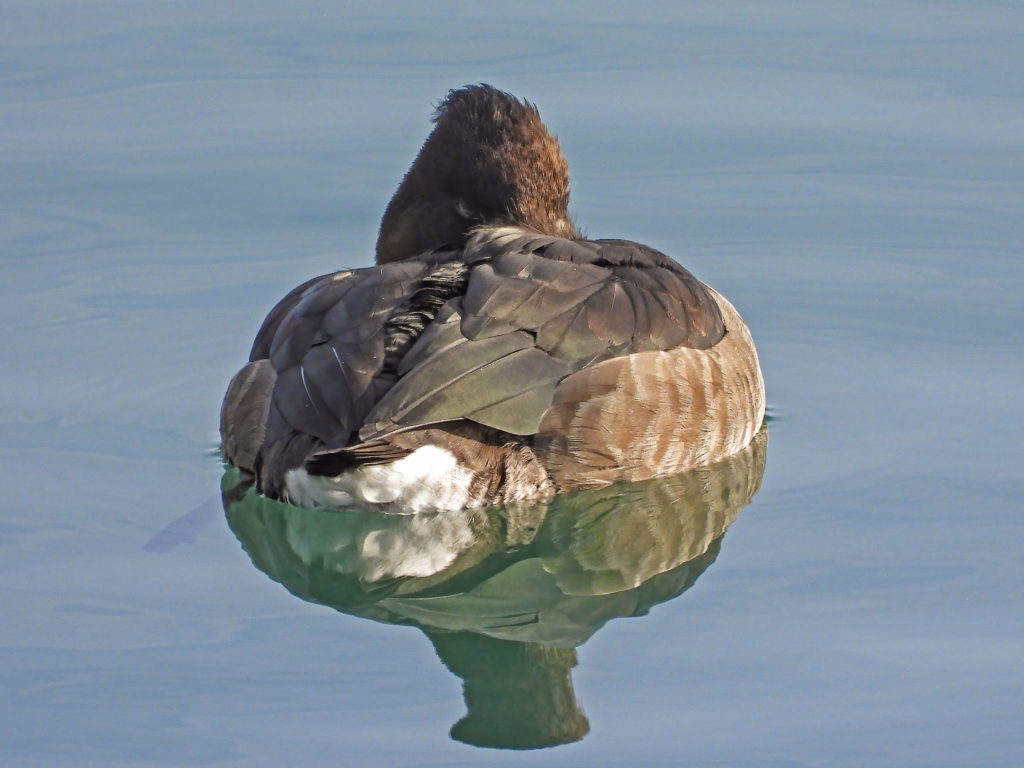
It is even more difficult to recognize the difference in head shape between Tufted and Ferruginous Ducks, and also the coloring at the base of the beak as well as the beak itself remains hidden under these conditions. Viewed over the top of the bill, the Tufted Duck’s bill is more concave, creating a more “shovel-like” appearance (Fig. 6). The transition from beak to forehead is more distinct in the case of the Tufted Duck than the Ferruginous Duck due to its more steeply upward sloping forehead. In the latter, the forehead rises more flatly and reaches its highest point approximately in the middle of the head, only to fall away again relatively steeply towards the back (Fig. 7). This produces an overall more wedge-shaped than round head profile, and is a helpful feature for identifying the Ferruginous Duck, that, with some experience, is also noticeable in sleeping specimens. The bill of the Ferruginous Duck is relatively long, slender, and tapered to the front (Fig. 7). It is gray in color with a small dark nail at the tip of the beak. In the Tufted Duck, the blackish-gray of the more pronounced “nail” at the tip of the bill extends out to the sides of the bill, creating a wider dark front edge of the bill in contrast to the dark nail in the Ferruginous Duck. Immediately behind it, a somewhat lighter band is visible in the Tufted Duck, which fades continuously into the gray of the bill toward the back (Fig.6). Male Ferruginous Ducks have a whitish eye color, while female Ferruginous Ducks have a dark eye color, distinguishing it from Tufted Ducks, which have yellow eyes. The head of female Tufted Ducks is brown to grayish brown and does not show a tendency toward maroon going into the reddish, as is typical for the Ferruginous Duck. The flanks are also colored differently – comparatively light and beige-brown, sometimes with a tendency toward a slight gray in female Tufted Ducks, while the flanks of the Ferruginous Duck are darker and always maroon with a tendency toward a more or less intense reddishness.
